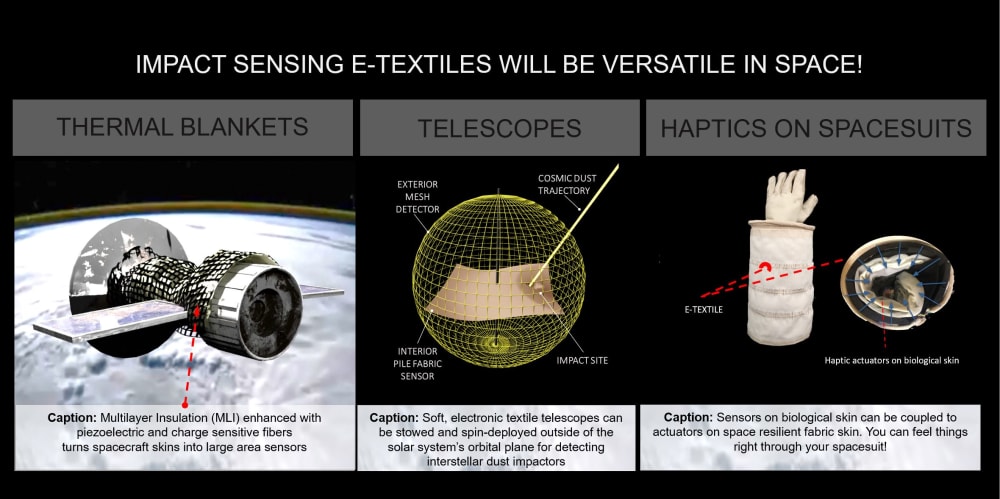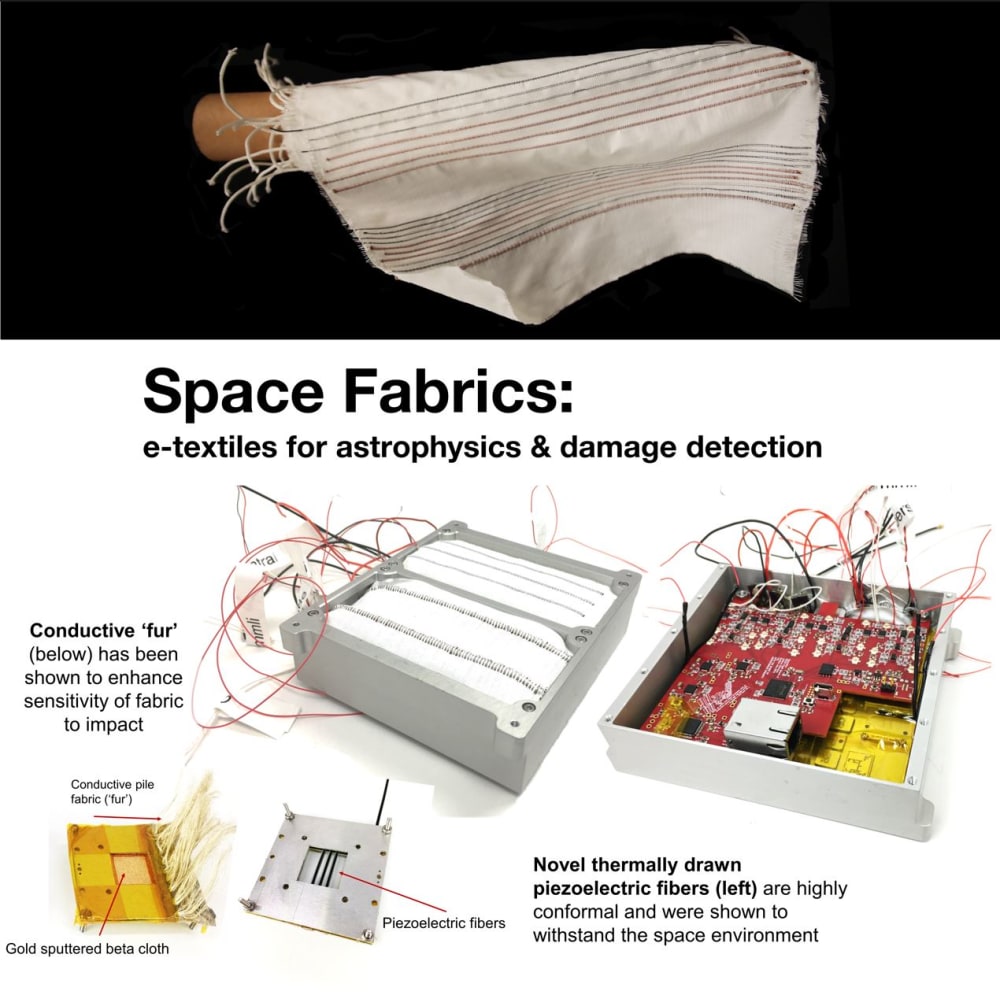

The sustainability crisis extends to Low Earth Orbit (LEO) , where human-made debris poses a ubiquitous threat. As one piece of a broader solution, we're bringing electronic textile technology to LEO for the first time, prompting an opportunity for industry and technology convergence among the electronics, textile manufacturing, and space technology industries.
For decades, spacecraft and spacesuits have leveraged textile substrates as their outermost protective skins. For example, the exterior of the International Space Station is composed of Teflon-coated fiberglass (‘Beta-cloth’) which is robust to atomic oxygen erosion and designed for combined strength, durability, and flame retardation.
Now, our team is augmenting these large-area space fabrics with cutting-edge multisensory functionality. Specifically, we've developed vibration-sensitive piezoelectric fibers and impact plasma charge-sensing conductive pile-fabric ('spacecraft fur!') Manufacturing is via fiber thermal draw towers and industrial-scale looms. We anticipate that fabric sensors, which are typically sequestered to applications in consumer wearables, will soon take on an essential role within the skins of our future persistent space-based assets.
We pose some ambitious and diverse questions enabled by this skin: With regard to structural-health-monitoring, can this sensor-enhanced skin localize damage on future space habitats induced by the tens-of-thousands of pieces of manmade orbital space debris and micrometeoroids too small to be tracked by radar? From a scientific perspective, can the fabric on spacecraft walls double as an enormous detector of interstellar dust, tiny messengers from cataclysmic events of scientific intrigue traveling at tens-to-hundreds of kilometers-per-second and originating hundreds of lightyears away? And excitingly, what if astronauts could feel touch and texture right through their pressurized spacesuits? In each case, vibration sensitive fabric could serve as one foundational technology.
An array of our space fabric completed one year of unpowered material resiliency testing on the outer walls of the Space Station. The project was also awarded a major grant by the ISS US National Laboratory on the basis of its potential for technology and industry convergence. This grant will fund a 6-month electrically powered in-space test beginning July, 2022, which will provide crucial data for realizing this technology.
The smart wearables market is poised for a growth storm. The global smart fabrics industry was valued at 878.9 million in 2018 and projected to expand at a CAGR of 30.4% from 2019-2025. Broadly, we seek to create value for aerospace and extreme environments product lines within this market by identifying new and innovative usecases for smart fabrics, and proving out robust integration strategies. According to recent projections, by 2025 as many as 1100 satellites could be launching each year, up from 365 in 2018. Space-resilient sensate skins will support the textile industry by enabling a new class of products at a time when interest and funding for space exploration technology is growing , and impact-induced damage to satellites (including those providing Earth-based services) is a growing threat.
Finally, we will inspire industrial partners to fund a fundamental astrophysics experiment by creating a system in which an interstellar dust sensor piggybacks on the otherwise essential thermal blanket
Video
-
Awards
-
 2022 Aerospace & Defense Category Winner
2022 Aerospace & Defense Category Winner -
 2022 Top 100 Entries
2022 Top 100 Entries
Like this entry?
-
About the Entrant
- Name:Juliana Cherston
- Type of entry:teamTeam members:Wei Yan, Grace Noel, Yuchen Sun, David Veysset, Steve Kooi, Syamantak Payra, Irmandy Wicaksono, Hajime Yano, Yoel Fink, Joseph A. Paradiso
- Software used for this entry:Eagle, Solidworks, Matlab, COMSOL, Blender
- Patent status:pending








